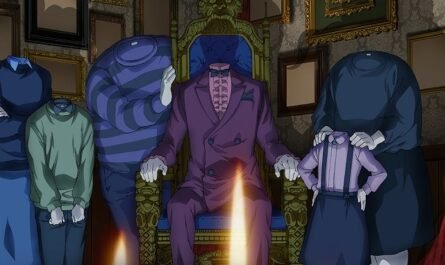An advertising method is used in shows such as “How to Live with You”, “THE FIRST SLAM DUNK”, ” and “Vivant, ” where almost no prior information is announced. In what situations is this kind of advertising effective? On the other hand, what kind of commercials create a good impression in this day and age? We asked Shintaro Sekine, the representative of CM Research Institute. (Seidansha Norifumi Numazawa) From last year to this year, hit works such as “THE FIRST SLAM DUNK,” “How Do You Live,” and “VIVANT” (TBS series) were created. What all three have in common is a publicity method that minimizes advance information by not talking much about the content or not advertising at all, which sometimes becomes more talked about than the content of the work itself.
Mr. Sekine talks about the similarities between these three works, which used unusual advertising methods and became massive hits.
“There are differences between movies and TV dramas, but what they have in common is that they have an overwhelming track record of hits and branded content. “SLAM DUNK” is a work that has set a milestone in both manga and anime. , there are many fans of the original author Takehiko Inoue. Ghibli also has a rare creator named Hayao Miyazaki.
The Sunday theater of “VIVANT” has a brand power that has made hard-hitting dramas such as “Naoki Hanzawa” hits in the past. It had the strength of a gorgeous cast. It became a hot topic despite its unusual advertising method because it was probably based on such name recognition and popularity.”
He also talks about their advertising stance.
“There was news that How Do You Live?” will likely be director Miyazaki’s last film and producer Toshio Suzuki’s comment before the release thatI thought about what people would think if there was no promotion at all.” The story itself has become a hot topic mainly on SNS and the Internet, which can be interpreted as a kind of advertisement. Still, they did not advertise to the mass media.
The same goes for VIVANT. This is similar to a “teaser ad” that aims to create a buzz by deliberately not showing the product or hiding the product name, but it is a strategy that can only be done if you have absolute confidence in the content. , it is a courageous strategy. However, with little prior information, the aim was to provoke consideration from fans and make it a topic of conversation, mainly on SNS.
However, Mr. Sekine analyzes that VIVANT’s strategic background differs from the other two works. For TV dramas, it is imperative to obtain real-time viewership ratings, and there is a theory on how to receive viewership ratings in the first episode. Therefore, before the first broadcast, there was a lot of publicity, but VIVANT was the complete opposite of that. The reason is.











